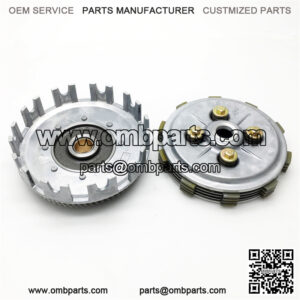The basic job of the clutch is to temporarily disconnect the engine from the transmission and drivetrain system which drives the rear wheel.
The lever which is pulled by your left hand is connected to a circular clutch assembly, which sits closer to the engine, via a cable or a hydraulic system. The assembly consists of a pressure plate on the outermost side which faces the engine cover.
When the clutch lever is out, the fully compressed springs on the pressure plate sandwich everything together. As the steel and friction plates are pressing against each other at this time, the rotation of the friction disc results in rotation of the steel disc and vice-versa.
When you pull the clutch lever in, the action causes the compressed springs on the pressure plate to retract. It is one of the alternatives to using a smaller clutch assembly with many plates or a larger assembly with fewer plates.
There are two main designs of motorcycle clutch assemblies – A wet clutch and a dry clutch. It has a longer life and can withstand harsh conditions better, in comparison to a dry system. A dry clutch as the name suggests doesn’t require an oil bath. The upside to that? It doesn’t contaminate the engine oil with particles which are a part of normal wear and tear of the clutch system. The other advantage is that since it doesn’t spin through an oil bath which also lubricates the engine, there is lesser drag and the system doesn’t rob the engine’s power.

